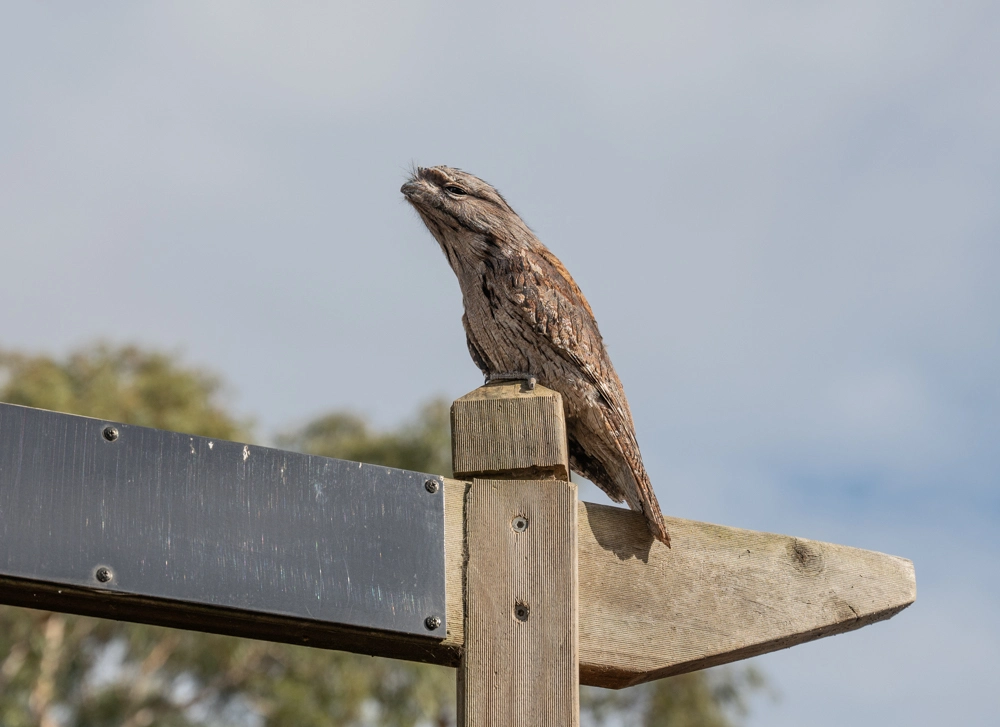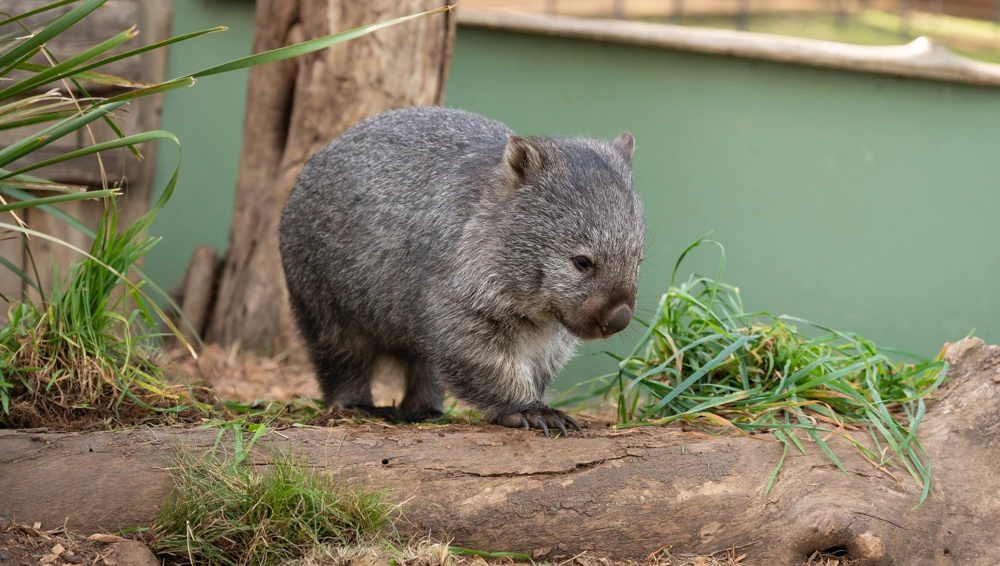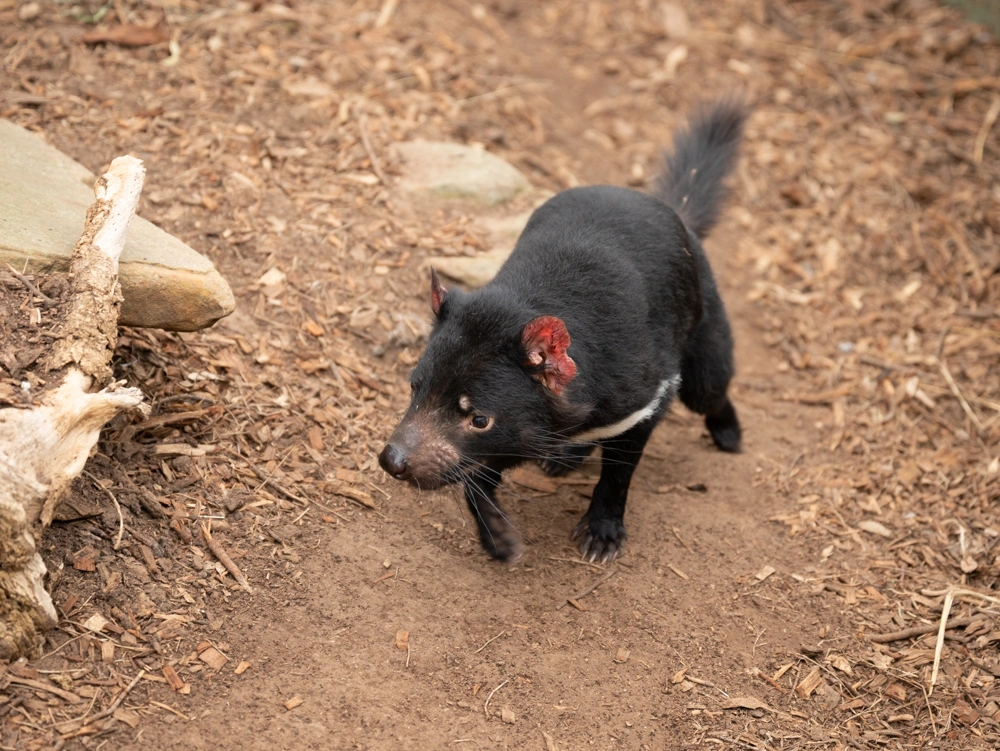Bonorong Wildlife Sancturay

On the way to Pedder Wildernis Lodge near Gordon Dam, I made a stopover at Bonorong Reserve. The day before I had booked a frenzy feeding (https://www.bonorong.com.au/feeding-frenzy).
The traffic in Hobart is gridlocked at around 8:30. The morning rush hour is in full swing. But the early start was timed just right to arrive at the Bonorong Wildlife Sanctuary at around 9:30. As soon as I entered, I was greeted by the Tawny Frogmouth, which had perched on a crossbeam in the entrance area. Two keepers were just about to get the animal down and put it in its usual place when the bird peed on them.
After registering, I didn't have much time to look around the sanytuary, as I was shown around by one of the friendly staff at around 10 a.m. and was allowed to get to know and feed the animals. One particular highlight was a 109-year-old sulphur crested cockatoo, who chatted animatedly with the visitors. He received a certificate from the Queen in 2014 for his 100th birthday. How old the cockatoo will live is unknown. It is possible that the birds can live up to 160 years in captivity, which means that the animal would outlive almost all the keepers currently working there.

In addition to quolls and possums, a 14-month-old wombat baby can also be fed. The playful little 15 kg mammal is very agile and jumped back and forth between us and the bunnies in a separate area. In its own enclosure, it had already lost a claw while digging. In a few months' time, this little bundle of joy will no longer be so playful, but will become aggressive. This is his transition from childhood to adulthood, so to speak. This will also be the time when the animal is released back into the wild.
Also to be found there and ready to feed are two echidnas. One is blind and follows the other, which is missing its right hind leg. The two clumsy, spine-covered mammals specialize in ants and are fed a mixture of crushed beetles and milk during feeding time. It is relatively obvious how much they enjoy slurping this porridge from your hand. The special thing about the echidna is that it is a mammal and lays eggs, which are transported into a stomach pouch immediately after being laid and remain there for a short time. The offspring free themselves from the egg with an egg tooth and are nourished for several weeks in the pouch not by teats but by a milk field. These characteristics make the echidna very special in the animal world. The spines are also so massive and hard that they can even puncture a tire. These are actually used as a defense against predators. To protect themselves even better, the animals have opposing claws at the front and back with which they can anchor themselves in the ground. Potential predators therefore have no chance of reaching softer areas. It has to be said that echidnas in Tasmania have virtually no predators these days.
When stroking a Yellow Crested Cockatoo, I noticed how deep the plumage actually reaches and where the bird's actual body begins. No wonder that the impression of weight is often deceptive. Birds of prey in particular appear very large and heavy. The typical weight of a sea eagle is just under 5 kg with a wingspan of less than 2.5 m. When the sky darkens and a gigantic black shadow appears above you, you get the feeling that a 15 or 20 kg monster is flying towards you. The cockatoos from Tasmania also appear much heavier and bulkier than they actually are in the end

In the end, I learned that Refuge for Animals is not funded by the government. The money comes from the ifaw (International Fund for Animal Welfare) and the entry/corresponding tours like the Feeding Frenzy. In addition, there is an emergency call and a Tasmania-wide network that cares for injured or abandoned animals. In a small hospital in the Bonorong Wildlife Sanctuary, operations can also be carried out and observed live through a window. Wombats and Tawny Frogmouth Owls are particularly affected by car accidents. The Bonorong Wildlife Sanctuary, among others, offers the possibility of treatment and care.
We assume no liability for external content! When you click on the video, the IP address is transmitted to YouTube.